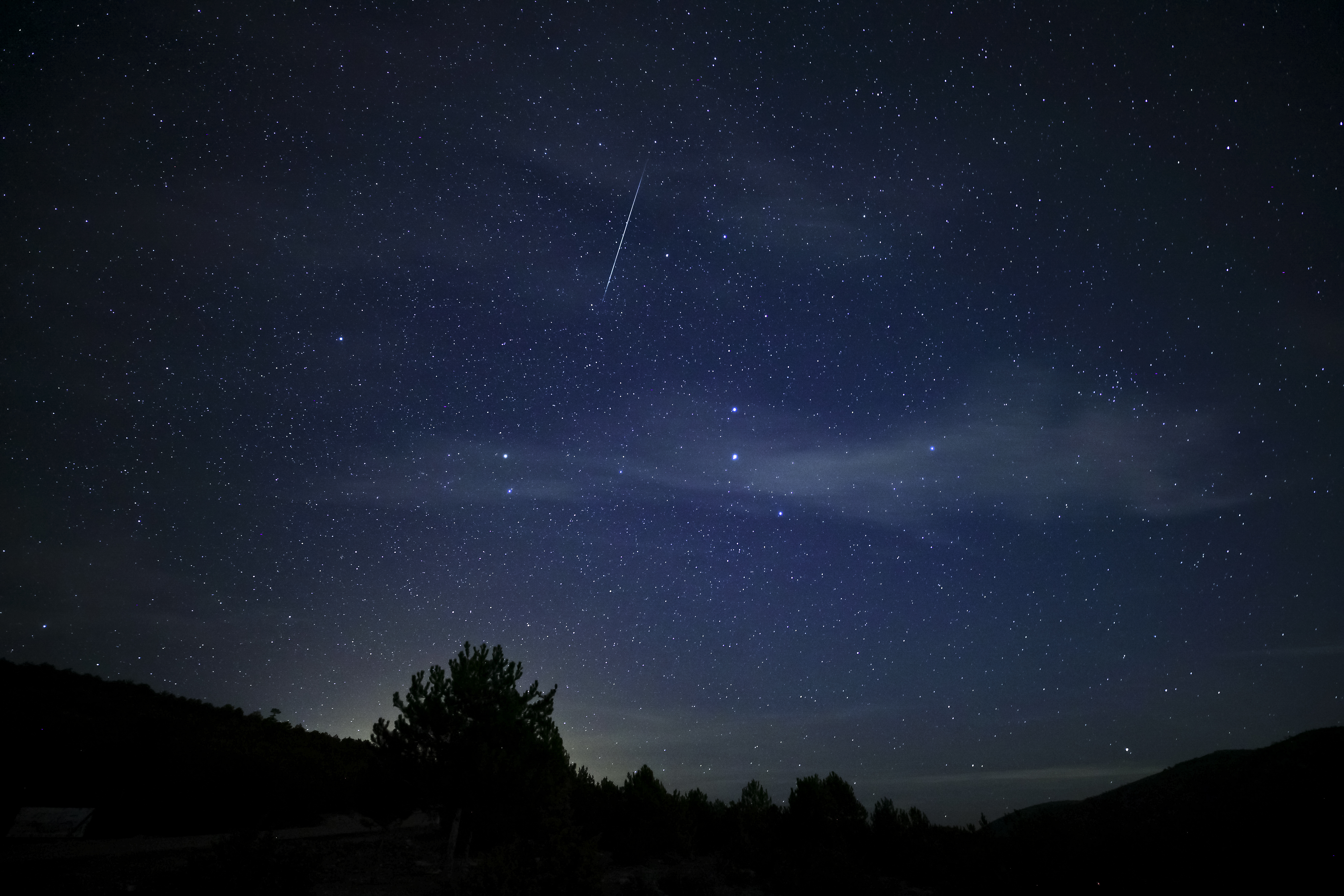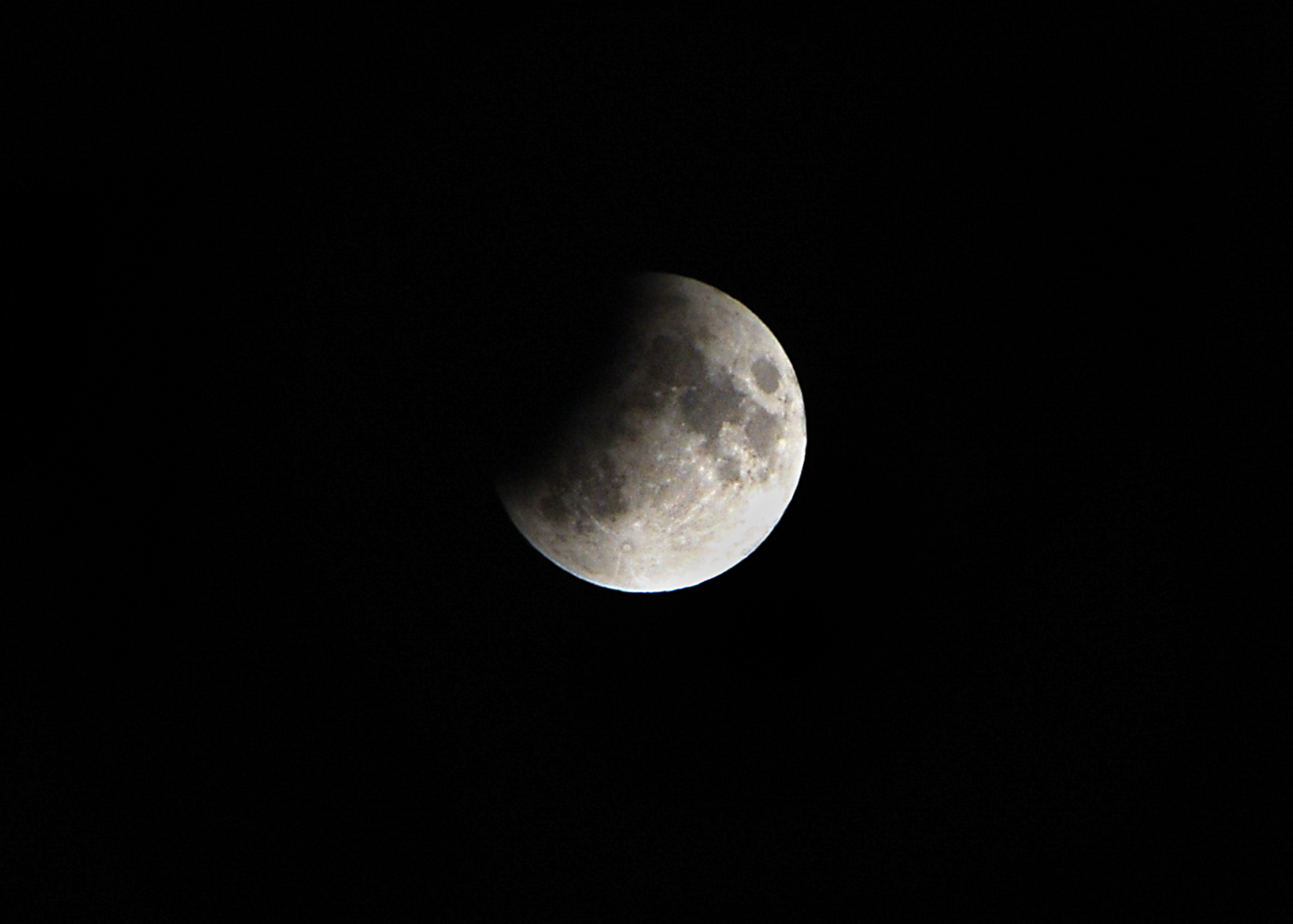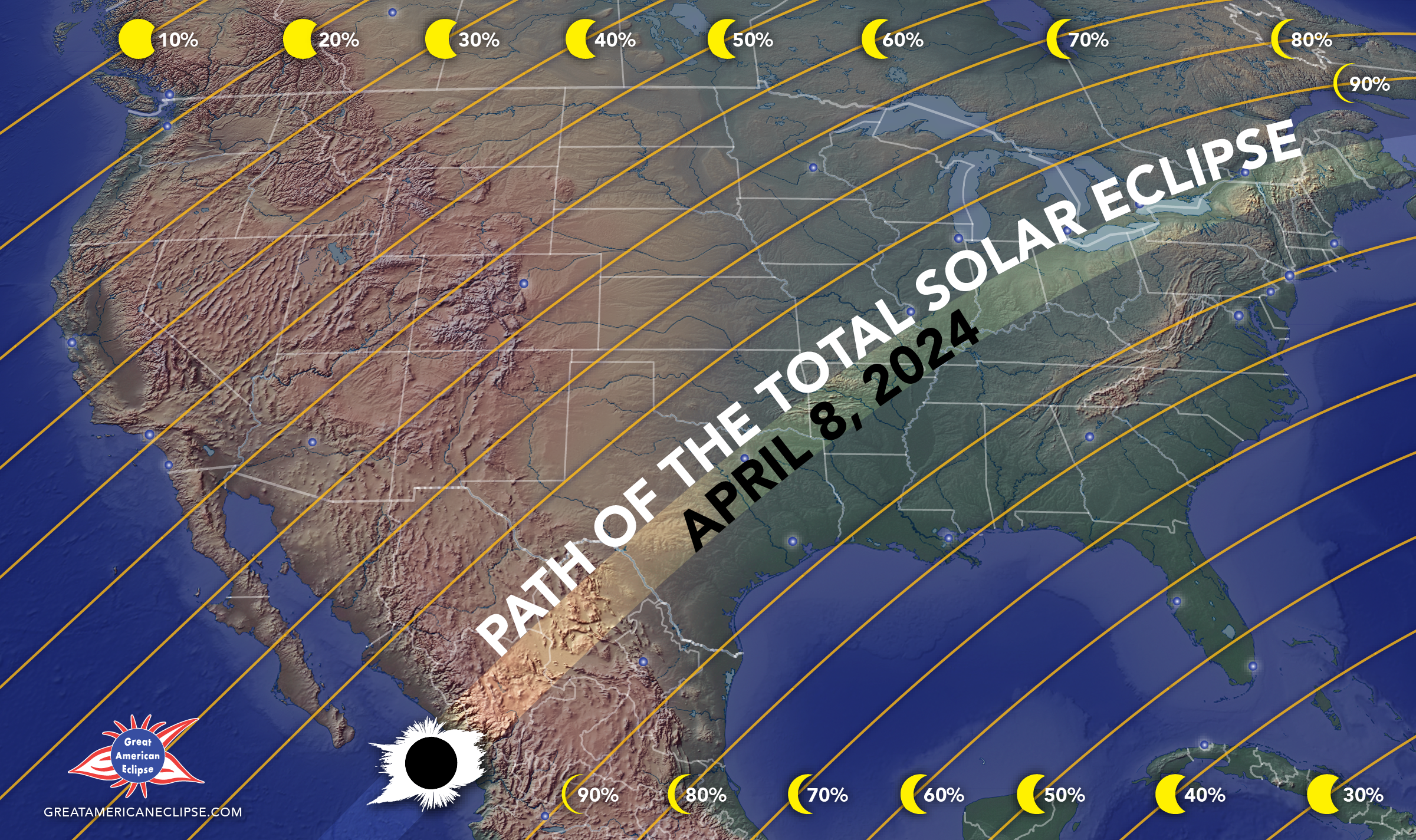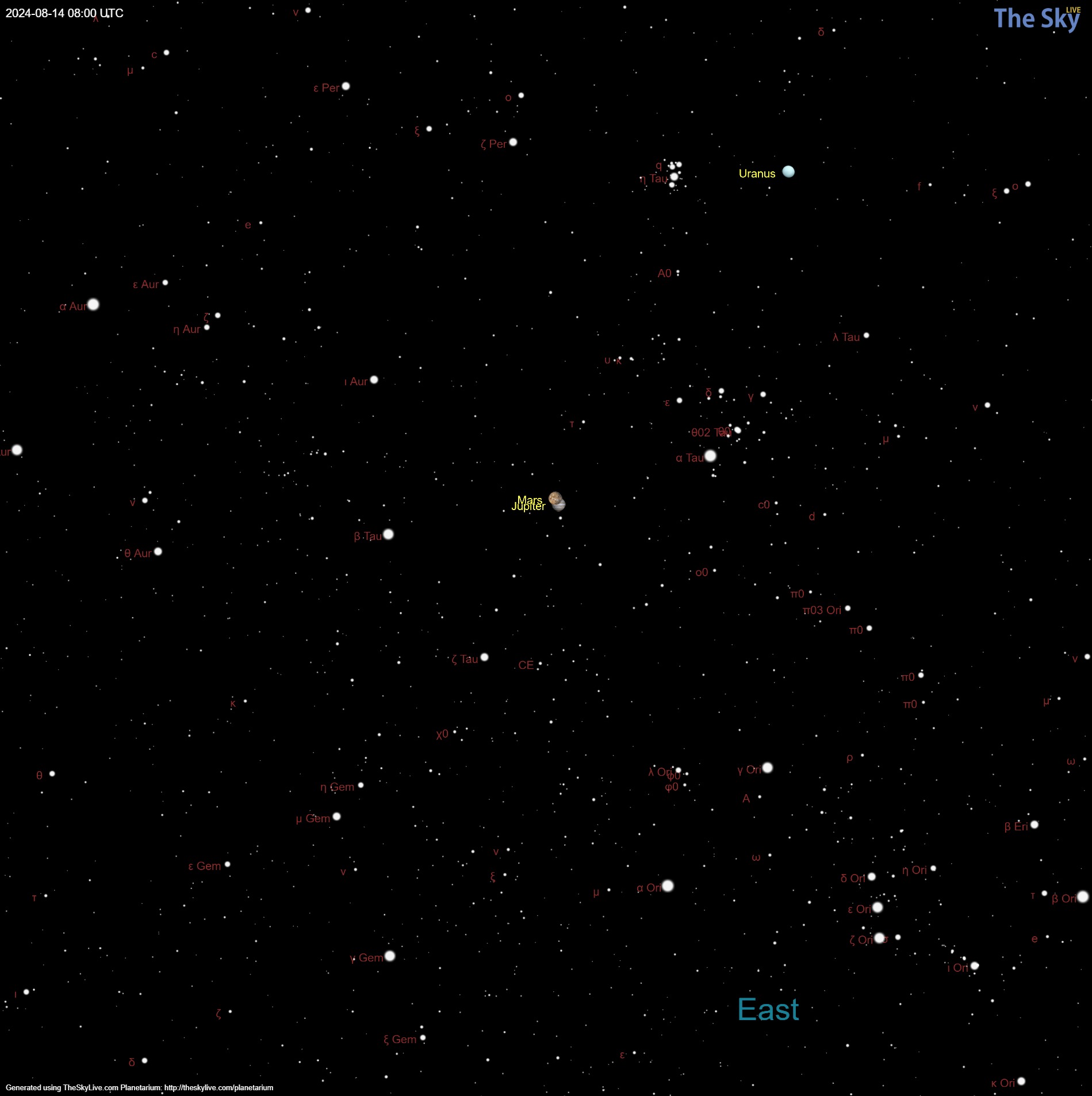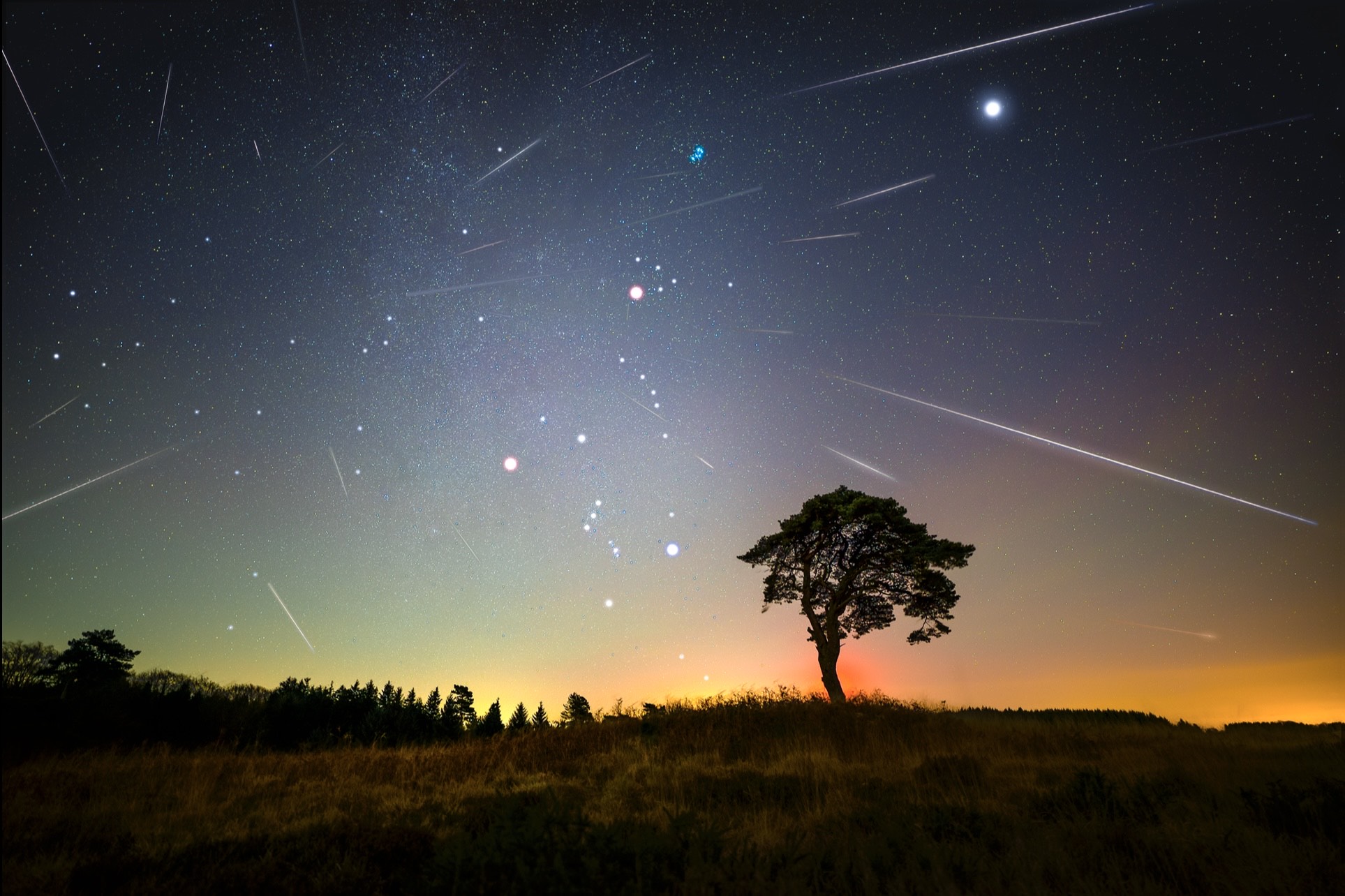The 15 must-see skywatching events of 2024
Here are some of the more noteworthy sky events that will take place this upcoming year.
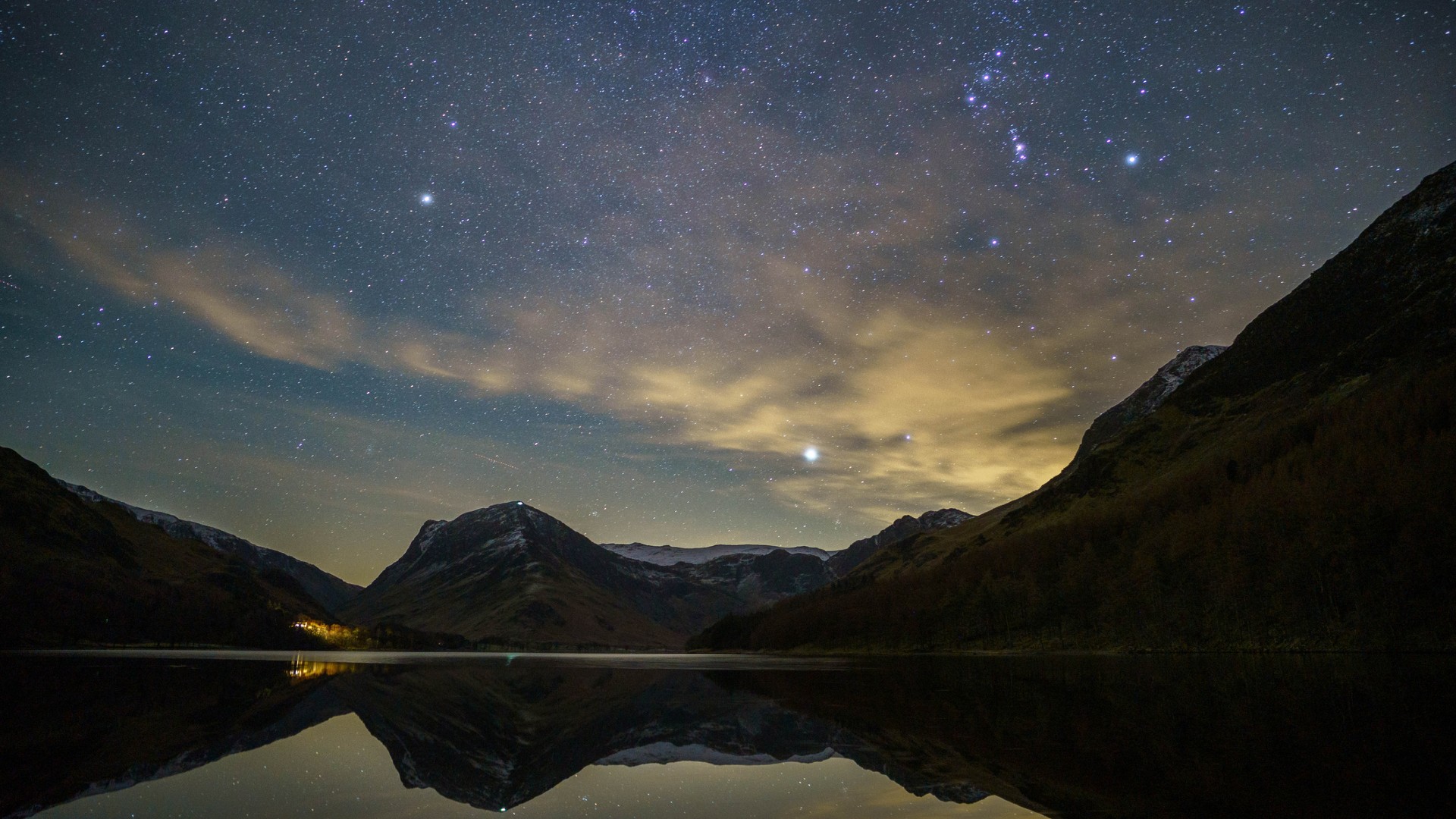
- Jan. 4: Quadrantid Meteor Shower
- Jan. 8: Moon hides a bright star
- March 25: Penumbral eclipse of the moon
- April 8: Total solar eclipse
- May 23: Antares again
- July 13: Moon hides Spica
- Aug. 11-12: The Perseid meteor shower
- Aug. 14: Planet summit meeting
- Sept. 17: Earth's Shadow makes a dent on the moon
- Oct. 2: Annular eclipse of the sun
- Oct. 17: Biggest full moon of 2024
- Late October: A bright comet is coming (maybe)
- Nov. 27: Spica déjà vu
- Dec. 13-14: Moon to squelch Geminid meteors

Looking for a telescope to see the planets or anything else in the December night sky? We recommend the Celestron Astro Fi 102 as the top pick in our best beginner's telescope guide.
Another year of skywatching is upon us, and there's a lot to look forward to in 2024!
Here are some of the most noteworthy sky events — 15 of them to be exact – including meteor showers, occultations of bright stars and a total solar eclipse for the United States, that will all take place this year.
Here you'll see some of the more noteworthy sky events that will take place this upcoming year. Space.com's monthly Night Sky skywatching column will provide more extensive coverage of most of these events as they draw closer.
If you want to make the most of these amazing stargazing events, check out our guides for the best binoculars and the best telescopes to get a closer look at the planets or anything else in the sky. We also have recommendations for the best cameras for astrophotography and best lenses for astrophotography.
Jan. 4: Quadrantid Meteor Shower
At present, the Quadrantid meteor shower is probably — along with the Geminids of December — the richest annual meteor display but one of the briefest; six hours before and after maximum, these blue meteors appear at only a quarter their highest rates.
This year, the maximum of the shower is predicted to occur on Monday, Jan. 4 at 4 a.m. EDT (0900 GMT) – especially favorable for eastern North America. Unfortunately, a last quarter moon will interfere somewhat with observations. Under more favorable conditions you might average a meteor sighting or more per minute. The Quadrantids' radiant (from where the meteors appear to fan out) is located halfway between the head of Draco and the end of the Big Dipper's handle, high in the northeast sky during the early morning.
Related: When, where and how to see the planets in the 2023 night sky
Breaking space news, the latest updates on rocket launches, skywatching events and more!
Jan. 8: Moon hides a bright star
Once again, the moon will hide Antares when a last quarter (or "half") moon, crosses bright red star Antares at around 4 a.m. EST (0900 GMT) for parts of the southeast United States.
March 25: Penumbral eclipse of the moon
The moon passing almost completely above the Earth's shadow, in the process samples only the shadow's outer part, the penumbra, which is not only pale but grades to paler outward. This eclipse favors the Western Hemisphere. The darkest part of the shadow – the umbra – lies to the south of the moon's path.
So, perhaps for half an hour or so, centered on the time of the middle of the eclipse (3:12 a.m. EDT), those who know to look may be able to discern a vague gray stain concentrated toward the moon's lower rim.
April 8: The Great North American eclipse of the sun
Those living within a path roughly 123 miles (198 km) wide and stretching from the Pacific coast of Mexico to the Atlantic coast of Newfoundland will get an opportunity to observe nature's greatest show — a total eclipse of the sun. The trajectory of the moon’s shadow has led some to refer to this upcoming event as "The Great North American Eclipse of the sun." The shadow track —better known as the "path of totality" — will sweep over portions of 15 U.S. states.
Many Americans taking full advantage of this event's close proximity to their homes will have a golden opportunity to witness firsthand one of the most beautiful and most exciting of nature's sky events. The total eclipse will be seen by an estimated 32 million people who fortuitously live within the totality path. However, the number of people who are within just a two-day's drive of the totality zone is probably over 300 million.
This will likely be one of the big events of 2024 and Space.com will provide you with all the details as we get closer to this "day of darkness."
May 23: Antares again
For the third time this year, the moon will hide the bright red star, Antares, once again for parts of the southeast United States.
The differences from the previous occultation in early March, is that this time the moon will be virtually full and that this event will occur during the late evening hours at around 11 p.m. EDT (0300 on May 24).
July 13: Moon hides Spica
The first quarter moon crosses in front of the bright blue star, Spica, for all of North America. Spica will disappear behind the moon's dark edge and reappear about an hour later along its bright edge.
The time for this event varies depending on exactly where you live. If you live in the East, the moon will cover Spica very low in the west-southwest sky at around 11:30 p.m. In the West, the moon covers the star before sunset; it will emerge on the moon’s bright side at around 8:45 p.m. PDT (0445 GMT on July 14).
Aug. 11-12: The Perseid meteor shower
This year will be an excellent one to watch for the peak of the Perseid meteors during the overnight hours of Aug. 11-12. Wait until after the moon sets around 11 p.m., then continue watching until the first light of dawn (if you plan to forego some sleep). From a brightly-lit city you may catch a few bright streaks, darting from the northeast sky, but from dark, rural locations you might see one every minute or two.
Our Perseid meteor shower observing guide has tips and tricks to see them. From a location free from bright lights and tall obstructions like buildings or trees, a single observer looking overhead and toward the northeast might see up to 90 shooting stars per hour. They're called Perseids because they appear to shoot away from the constellation Perseus.
Aug. 14: Planet summit meeting
Check out the east-northeast sky any time after 1:30 a.m. on Aug. 14 to see an exceedingly close pairing (0.3-degree) of Jupiter and Mars; Jupiter is nearly 16 times brighter than its orange companion. This is the closest planet alignment of 2024.
Sept. 17: Earth's Shadow makes a dent on the moon
The Harvest full moon will undergo a minor partial lunar eclipse on Sept. 17. The moon will graze the Earth's dark shadow from 10:12 to 11:16 p.m. EDT. (0212 to 0316 GMT on Sept. 18) But at its peak (10:44 p.m. EDT or 0244 GMT on Sept. 18) only 8.7% of the moon will be eclipsed. It will look like a dent or tiny scallop has been taken out of the top of the moon.
Oct. 2: Annular eclipse of the sun
This is the type of solar eclipse where the moon is a little too distant from the Earth to cover the sun completely, leaving a ring of sunlight shining around the moon's silhouette.
The path of the eclipse intersects Isla de Pascua, more popularly known as Easter Island, where at 1:04 p.m. local time, the solar ring will persist for 6 minutes and 5 seconds. The moon's antumbral shadow also makes landfall in South America, taking 12 minutes to cross Patagonia, moving in from the Pacific over Parque Nacional Laguna San Rafael in Chile and exiting out over the Atlantic at Cañadón Once de Septiembre in Argentina.
An annular eclipse is not like totality: the sky gets no darker than in a deep partial eclipse; the sun's glorious corona, and the chromosphere and "edge effects" such as shadow bands cannot appear. Yet, it is still a spectacular sight, and enthusiasts will go to whatever section of the eclipse track is most easily accessible for them.
Read more: Annular solar eclipse of 2023 wows skywatchers with spectacular 'ring of fire' (photos, video)
Oct. 17: Biggest full moon of 2024
The moon turns full at 7:26 a.m. Eastern Daylight Time and 10 hours and 39 minutes earlier it will arrive at perigee, that point in its orbit closest to the Earth at a distance of 221,943 miles (357,182 km).
Colloquially, this is now referred to as a "supermoon." Expect a large range in ocean tides (exceptionally low to exceptionally high) for the next few days.
Late October: A bright comet is coming (maybe)
On Sept. 28, Comet Tsuchinshan–ATLAS will pass 36 million miles from the sun, and two weeks later will come within 44 million miles of the Earth. There is a "chance" that this comet could become bright enough to be readily seen with the naked eye low in the west-southwest sky 1 to 3 hours after sunset during the third week of October.
But a bit of caution: comets are notoriously unpredictable. We can only guess how bright it will get and how long the tail will be. We'll just have to wait and see.
Nov. 27: Spica déjà vu
For the second time this year, the moon will occult or hide the bright blue star Spica during the morning hours of Nov. 27th. This time, the moon will be a slender crescent and Spica will disappear along the moon's bright edge.
In the East, moon and star will appear low in the southeast when Spica disappears at around 5:30 a.m. EST (0930 GMT). The reappearance from behind the moon's dark side will nearly coincide with sunrise. Across the Rockies, the sudden reappearance of Spica from behind the moon's dark side will occur around 4:15 a.m. MST (1015 GMT).
Dec. 13-14: Moon to squelch Geminid meteors
Thanks to a full moon on Dec. 15, 2024 is not a good year at all to observe the Geminids, December's principal meteoric display and the best of the annual meteor showers. The moon will flood the sky with its bright light when peak activity is expected, and its light will hide all but the brightest shower members for a few days around that date.
Editor's Note: If you snap a photo of any of the planets, eclipses or meteor showers in this guide and would like to share it with Space.com's readers, send your photo(s), comments, and your name and location to spacephotos@space.com.
Joe Rao serves as an instructor and guest lecturer at New York's Hayden Planetarium. He writes about astronomy for Natural History magazine, the Farmers' Almanac and other publications. Follow us on Twitter @Spacedotcom and on Facebook.

Joe Rao is Space.com's skywatching columnist, as well as a veteran meteorologist and eclipse chaser who also serves as an instructor and guest lecturer at New York's Hayden Planetarium. He writes about astronomy for Natural History magazine, Sky & Telescope and other publications. Joe is an 8-time Emmy-nominated meteorologist who served the Putnam Valley region of New York for over 21 years. You can find him on Twitter and YouTube tracking lunar and solar eclipses, meteor showers and more. To find out Joe's latest project, visit him on Twitter.
